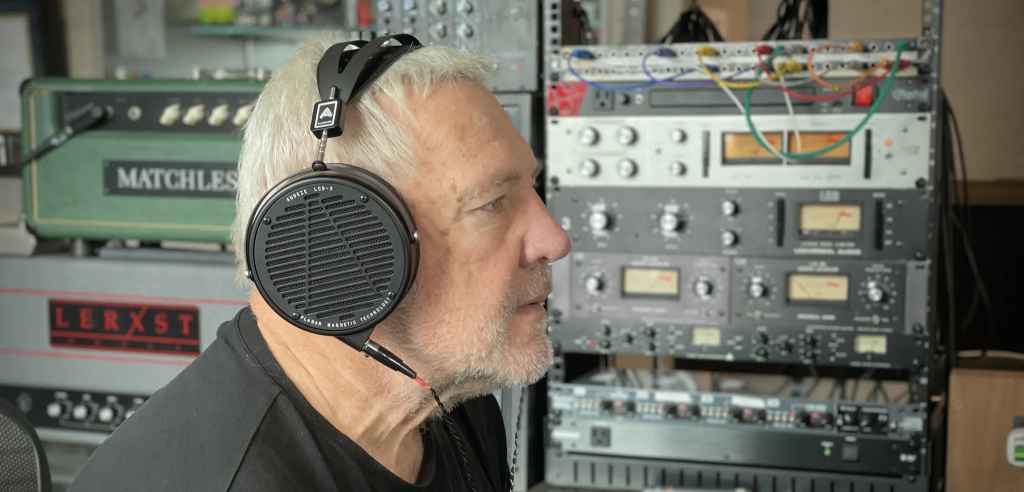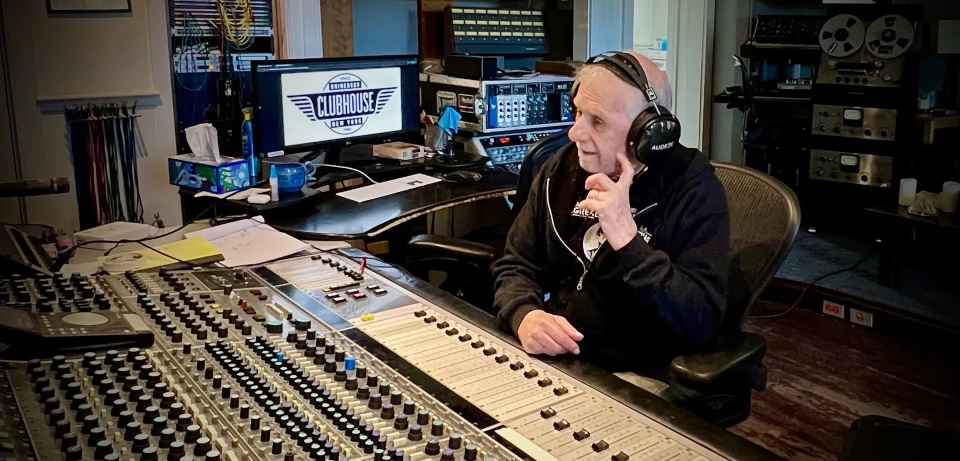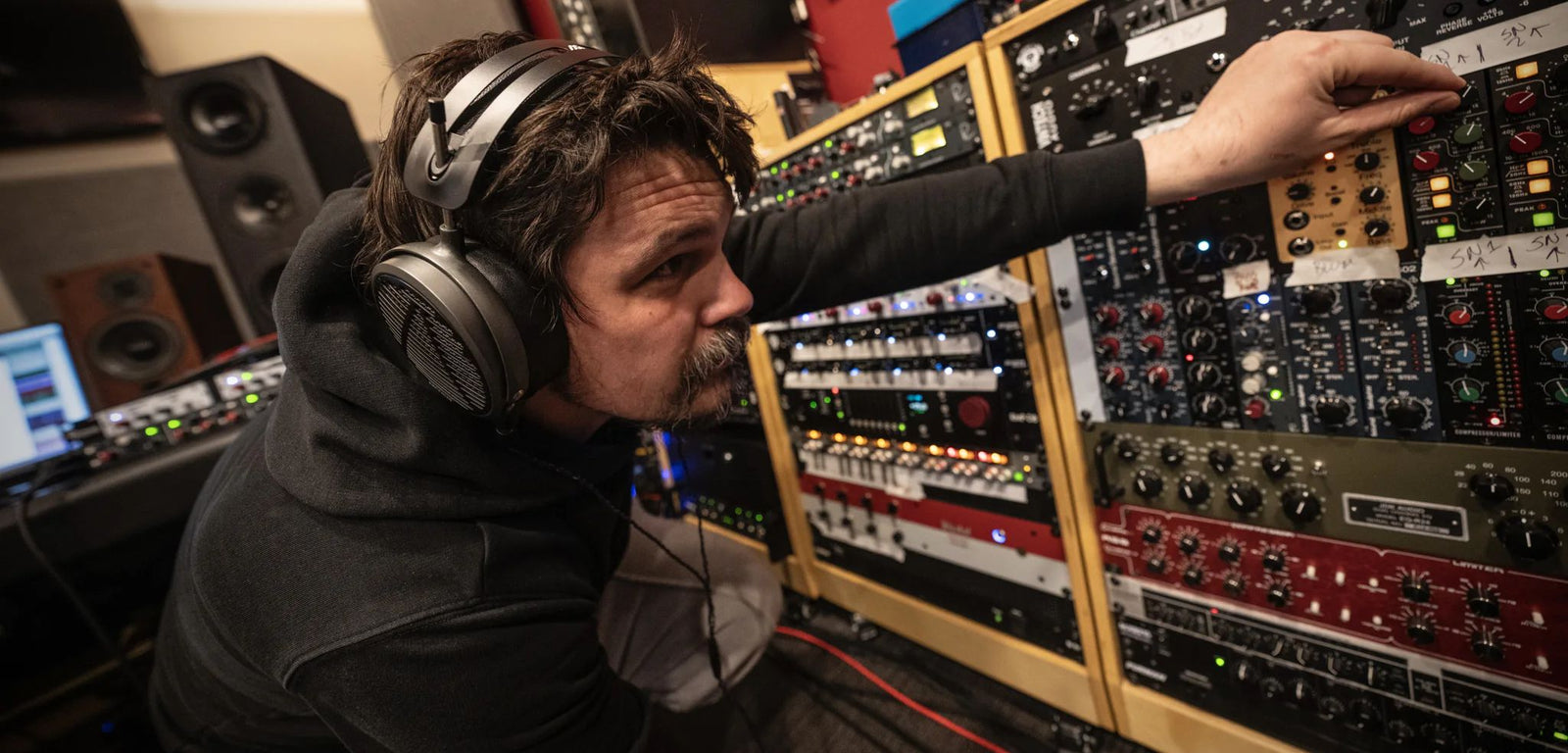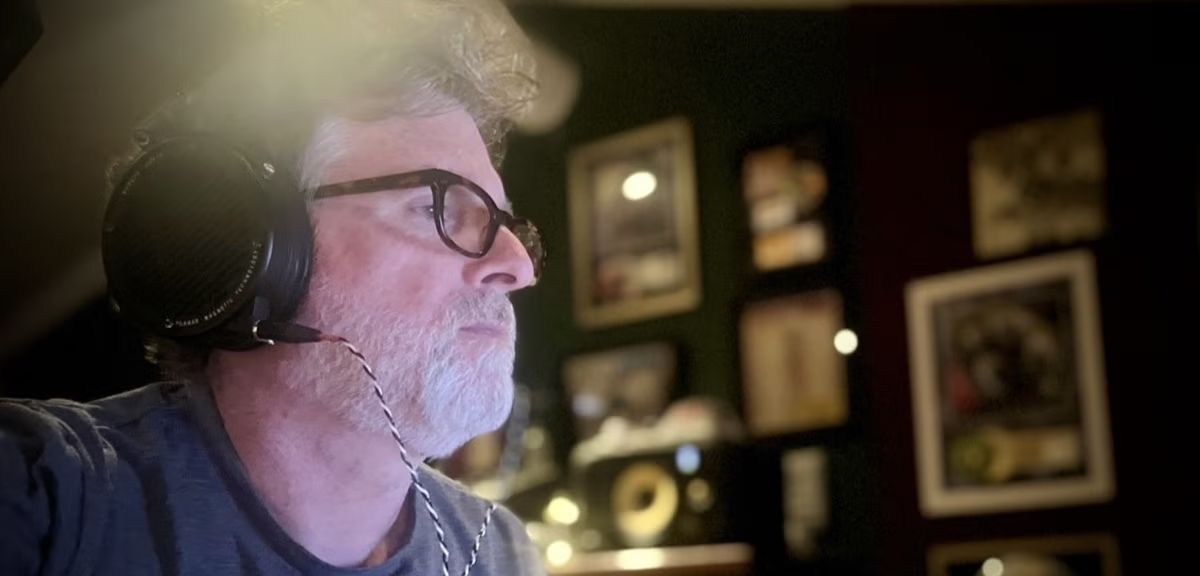
Alex Lifeson is a Canadian musician, best known as the guitarist of the Canadian rock band Rush.

Elliot Scheiner is an engineer and producer. He started working for Phil Ramone at his A&R studios which at that time was considered one of the best studios in the country.

James 'Jimmy T' Meslin is a Grammy winning recording, mix, and live sound engineer based out of Long Island, NY. He's probably best known for his work with prog-metal giants Dream Theater and their affiliated projects.

Dave Way has been mixing longer than he hasn’t. Platinum albums, No. 1 singles, 4 Grammys, 19 Billion streams with names like Michael Jackson, Fiona Apple, P!nk, Xtina Aguilera, Ringo Starr, Iron And Wine, Sheryl Crow, Marshmello, Fall Out Boy, Kesha, Macy Gray, TLC, Victoria Monet, Sons Of Anarchy, Tracy Chapman, Ben Folds, John Doe, MC5, Spice Girls, Weird Al, Paul McCartney, Bobby Brown, Mick Jagger and many, many more.
August 10, 2021

I’m quite proud of a song that I wrote awhile back called “Blink” This song has been used for a variety of campaigns. From a Covid 19 Relief fund to help struggling musicians to a theatrical film trailer. Other music placements in the recent past include a Television ad for Facebook featuring music I produced for one of the Latin albums in my catalog, as well as music that was featured in the film “War Dogs”.
My roles in my company are quite diverse. It is my responsibility as the owner of my music catalogs, to produce and deliver several albums per year to my global distribution partners. My job involves, making decisions about what styles to produce and if I’m not the right composer for the album, finding the right fit within my stable of composers. Once an album is in production, my role involves overseeing the project from conception to delivery, often times being the engineer recording the music, as well as mixing, editing and delivering the final music to my distributors. I also prepare the metadata for each album according to the specifications of my various distributors. To sum things up, I spend hours upon hours in the studio.
I grew up in the rural Copper Country of Michigan’s Upper Peninsula, and I knew I was a musician from a very young age. I heard music in everything from the rhythm of the windshield wipers to the sound of our car engine. Although I picked up various instruments early on, guitar and bass wound up being my love. I started writing songs in grade school. They usually began as short poems, but once I learned a few chords on the guitar, I started singing my poems and they turned into songs. In this remote part of the northwoods, we shopped at the Sears Roebuck catalog. I always had my eye on the shiny guitars and amps. Over time, my taste and collection expanded to include interesting handmade guitars as well as classic studio guitars. My harem has reached 36, but my primary relationship is with my early-70s Martin D35-S. I have a colorful assortment of guitars on my studio wall. It’s like having a roomful of good friends.
My performance career began early. I played bass guitar in my dad’s wedding band. By age 12, I was in two rock bands. At 16, I partnered with a local singer/songwriter and formed a band called “Trees” that had a strong following in Upper Michigan as well as in Ann Arbor, where I moved in my late teens. That move was the first (daunting) commitment I made to my career as a musician.
I enjoyed performing, but I always had a special love for composing and recording. As a child I tinkered with my family’s open reel RCA two-track machine, and I eventually bought a Teac 4-track, which was my inspiration to become an engineer. Once in Ann Arbor, I had the great fortune of meeting engineer/producer, Geoff Michael, who was a gracious teacher and collaborator. We created a studio in my basement where we produced music for friends and clients. Although I was comfortable and I loved Ann Arbor and my fan base there, I made the commitment to myself to pursue that dream and moved to LA in 1987.
In LA, I discovered quickly that my dream of making a living in music required being competitive and diverse. I invested in a significant upgrade to my studio. This was all fun and exciting, but in order to pay my bills and continue buying gear, I had to take gigs performing in hotel lounges and clubs as a solo act. To land the best-paying gigs, I told a big booking agent that I could play the piano and had a wardrobe of fancy clothes, and I made it true by the night I opened at the lounge. It was sometimes exhausting to balance my daytime studio life with performing four sets a night.
In the 1990s things began to evolve for me. In addition to getting higher-end clients and writing with established artists, I partnered with a drummer/percussionist who was as motivated as I was to get prime studio work. Our demos got the attention of CBS Television Network and some prominent production music companies. This was a turning point in my career: We began writing on-air promos and managed to get a daytime talk show theme song. One of my clients offered me a job to executive produce a music catalog in 2001. I helped to start a well-known music library, 5 Alarm Music. I produced the first 30 albums for 5 Alarm before moving on to become studio manager of Firehouse Recording Studios in Pasadena. It was an exciting opportunity to work with high profile artists, composers, producers and engineers. In 2005, I wanted to be independent in business again, and I launched my own brand of production music.
Some of my greatest influences early in my career are singer-songwriters like Joni Mitchell, James Taylor and Carole King. As my career developed and I started understanding more of the technical side of music, I had some important mentors, including recording engineer Geoff Michael who taught me all about a channel path and how to properly EQ things. I recorded my first session with a live drummer alongside Geoff. Years later, when I became involved in the LA Music scene, some of my mentors who allowed me to sit by their side and learn from their brilliance were recording engineer / producers: Gabe Moffat and Don Murray.
I have to admit that it’s been very frustrating and has taken awhile for me to overcome the trials of being a female producer and recording engineer in a very male-dominated industry. I’m very grateful to the people who afforded me opportunities to prove that I can do this work at a high level. I’m happy to say that it is getting better for women in the music business, but we still have a long way to go. I am currently involved with the Producers & Engineers wing of the National Academy of Recording Arts and Sciences (NARAS) LA Chapter, and we’re working hard to increase visibility for people who have historically been underrepresented.
Well I love guitars and basses. Recently, I added to my collection a custom made Baratto 335 guitar and a custom made Veillette fretless 5 string bass. As a guitar player I like to surround myself with a lot of acoustic and electric instruments to choose from when I’m coming up with new music. One of my favorites lately is an electric cigar box guitar called a “Cigfiddle” made by Matty Baratto. I also have a variety of other small guitars that I turn to, like Joe Veillette’s beautiful unison 12 string called a “Gryphon”.
I also love microphones. I own a 1961 Neuman U67 that is my “go to” mic for just about everything. Lately, I’ve also discovered the magic of Ribbon microphones and have developed a love for the AEA mics. They work great on just about everything! Another favorite condenser microphones that I often use is my Pearlman TM-1, made by one of my favorite gear gods, Dave Pearlman.
Besides gear in the analog world, I’m also a fan of many plug-ins. I love what Universal Audio has come up with and I own several of their plug-ins. Some of my favorites include the Neve 1073 EQ, the Manley Variable MU, the Empirical Labs Distressor and the Shadow Hills Mastering compressor. I am also a big fan of the SoundToys collection and use their brilliant software tools pretty much every day!
The best wisdom I can offer to those aspiring toward a similar path in their career is to always believe in yourself. I can’t tell you how many times I’ve said “Yes, no problem, I can do that” with a bit of false bravado mixed with a strong belief in myself that I could make it true. In order to make a living in music, I had to take on a lot of projects, both in the studio and live performance. Not all of them were appealing, but in order to support my dream of building my business, I took on pretty much anything that came my way in the early years. I believe you have to risk failing to achieve most worthwhile goals. I think that being diverse, flexible, and believing in yourself are the keys to staying inspired, motivated and successful. Write yourself a big check, and then go out there and earn it.
Not to date myself or anything, but I would say I’ve been working with headphones for over 35 years now! Headphones are a crucial component to my workflow. I’m always looking for the ideal pair of headphones that I can wear for several hours on end. Headphones that are detailed, accurate and comfortable. Lately, ... I’m finding that LCD-X headphones reveal depth as well as detail, and allow me to do some of the best discrete listening I’ve experienced. I like them a whole lot!